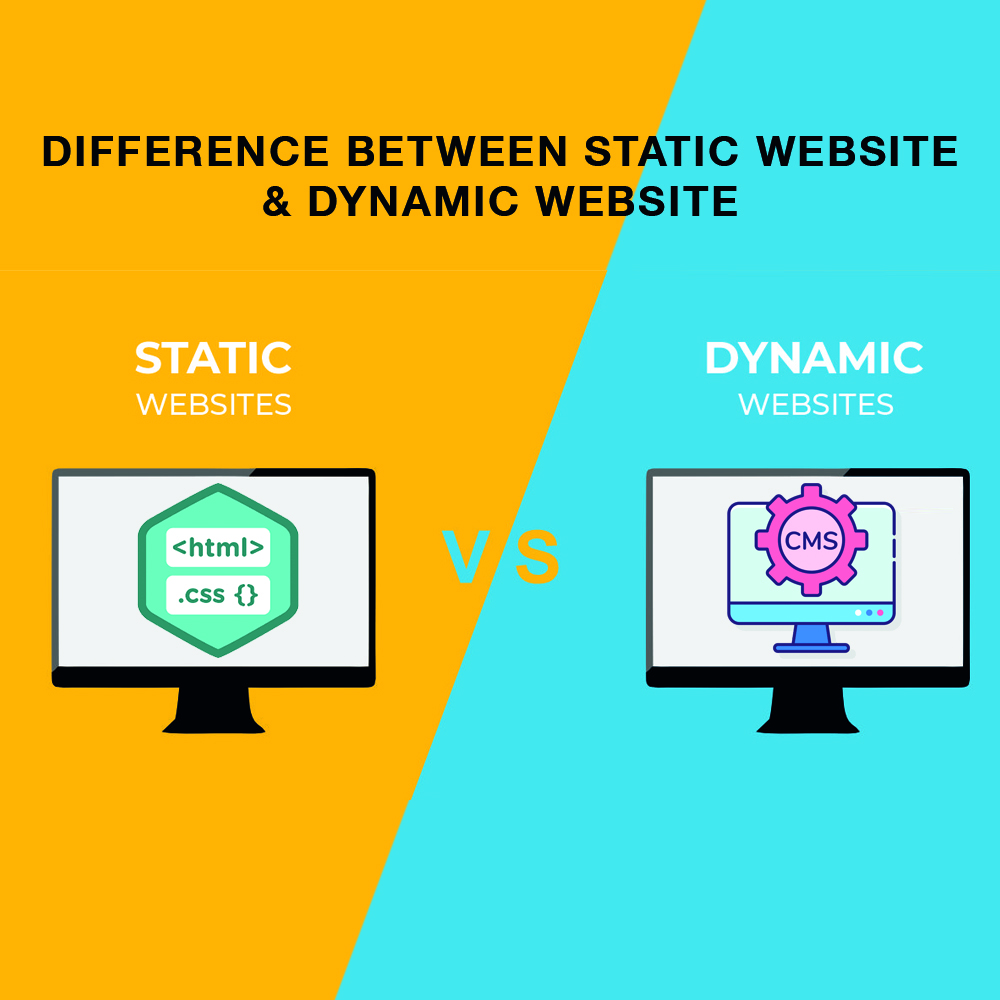Choosing Between Static and Dynamic Websites: A Comprehensive Guide :
 himanshu
himanshu
Static Website:
A static website is composed of fixed, unchanging web pages. They have unchanging content that is provided to users directly from the server. The content of each page is coded in HTML and does not change unless manually updated by the developer.
Characteristics:
Fixed Content: Remain fixed until changed manually.
Limited Interactivity: .
Easier to Host: They are often simpler to host as they require less server processing.
Advantages:
Simplicity and Speed: Static websites are simple and load quickly due to the absence of server-side processing.
Security: They are generally more secure as there is no database or dynamic content to exploit.
Cost-effectiveness: They require less maintenance and infrastructure.
Disadvantages:
Limited Functionality: Limited interactivity and functionality.
Manual Updates: The developer has to change the content manually.
Scalability: This is one of the biggest reasons as it is hard to make any changes in a static website.
Dynamic Website:
A dynamic website uses server-side processing and involves a database for personalized content, real-time updates, and improves user interactivity.
Characteristics:
Dynamic Content: Content is generated dynamically, hence personalized user experiences.
Interactivity: High level of interactivity, and real-time updates.
Complex Architecture: As it has server-side scripting and involves database hence it has complexity.
Advantages:
Functionality: It offers a wide range of features.
Easier Updates: It is easier to do any kind of updates in dynamic website.
Personalization and Interactivity: They provide personalized content based on the preferences of the user.
Content Management Systems (CMS): CMS platforms provide user-friendly interfaces for managing and updating content without manual HTML editing, streamlining
Disadvantages:
Slower Loading: As it involves database and server-side scripts hence takes more time to load
Maintenance and Security: Increased complexity can lead to potential security vulnerabilities.
Higher Development Costs:
In summary, the choice between a static and dynamic website depends on the specific requirements of the project, including the desired features, content update frequency, and interactivity level.
Subscribe to my newsletter
Read articles from himanshu directly inside your inbox. Subscribe to the newsletter, and don't miss out.
Written by
